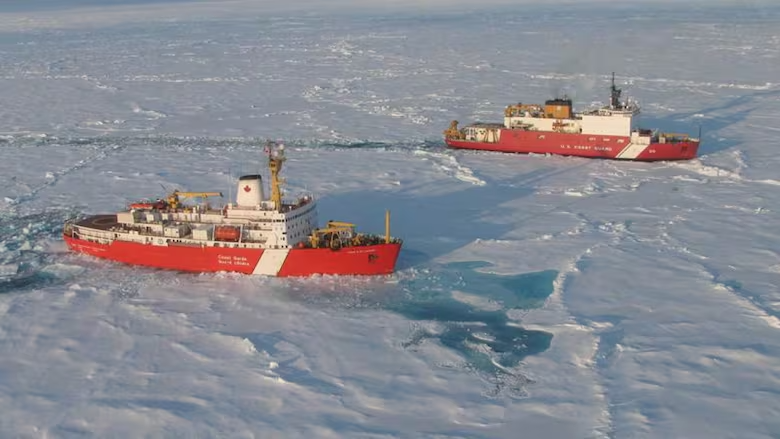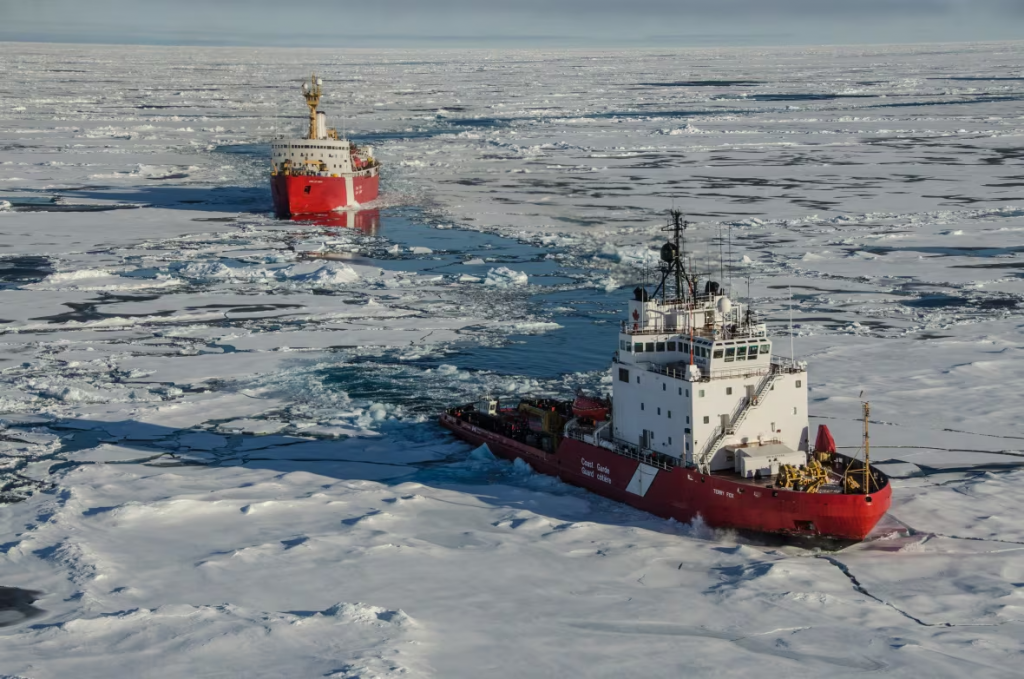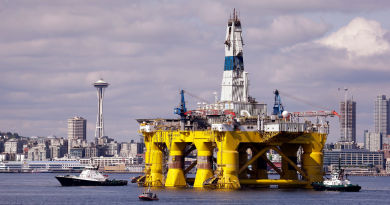Analysis: Is the promise of military icebreakers political theatre or sensible policy?

The large ships would be a show of force, but lack qualities desired in a combat vessel
A former top naval commander and several defence experts have been left scratching their heads following the governing Liberals and Opposition Conservatives’ recent embrace of the notion of giving the Royal Canadian Navy heavy, armed icebreakers to defend the Arctic.
They question the military sensibility of building — possibly at a cost of billions of dollars — one, two or even three 10,000-tonne or more polar-class icebreakers with guns and missiles, vessels with possibly limited usefulness that would be vulnerable to both air and submarine attack.
“I’m puzzled, because I don’t know what it is we’re trying to achieve other than the political objective of demonstrating a commitment to Arctic sovereignty. Check. I get it. However, it needs to be sensible, and more importantly, it needs to be practical,” said retired vice-admiral Mark Norman in a recent interview.
Canada’s defence in the Far North was a topic brought up when Prime Minister Mark Carney met with U.S. President Donald Trump in the Oval Office on Tuesday. A senior Canadian government official said the two leaders spent a lot of time talking about the Arctic.

During the recently concluded federal election campaign, the Liberals promised to “expand the capabilities of the navy with new submarines and additional heavy icebreakers,” while the Conservatives were more explicit, saying they would build two additional polar icebreakers for the military.
If the promise of heavy militarized icebreakers sounds familiar, it’s because it was made before. Back in 2006, the former Conservative government of prime minister Stephen Harper rode to power on a pledge to build heavy military icebreakers for the navy.
Ultimately, the high construction cost and the fact the vessels would have utility only four months of the year led to the design and creation of Arctic and offshore patrol ships (AOPS), light icebreakers which can operate and patrol off all three of Canada’s coastlines. The navy plans on deploying six AOPS and the coast guard is expected to receive two.
For Norman, there is a sense of déjà vu about the renewed debate.
“We went through this very issue in 2007-08 up to the 2010-12 timeframe, where we had a government of the day that was quite explicit about what they wanted, but couldn’t explain why they wanted it,” said Norman.
“I get it, the government gets to decide. But at the end of the day, it doesn’t make a lot of sense.”

The coast guard is usually the home of Canada’s unarmed icebreaking fleet. The Liberals, however, have promised to rewrite the service’s mandate to conduct maritime surveillance and integrate them into Canada’s NATO defence capabilities. Whether that means arming them is unclear.
Norman said there needs to be a clear division of responsibilities between the navy and the coast guard.
“We need to decide what we’re trying to achieve. If it’s surveillance, there’s lots of other ways to achieve surveillance,” said Norman. “I’m concerned because as soon as we list things that we want to buy, we lose track of what it is we’re trying to achieve. And then the entire machinery [of government] becomes focused on buying something which may or may not make sense.”
Canada, with 18 registered ice-capable boats, has the second-largest number of icebreakers in the world after Russia, which reportedly has 57. And only one of those Russian ships, the Ivan Papanin, is specifically built for combat and has just recently entered service. China has a handful of medium icebreakers in its navy.
Overall, though, big icebreakers — with reinforced hulls and special bows — are good for opening up Far North channels. They are slow and noisy, not exactly qualities you want in a combat vessel.
‘Offerings into the void’
If the objective is surveillance and deterrence in the Far North, defence expert Rob Huebert said, Canada would be better served with investing in under-ice capable submarines.
“If you are actually in a shooting conflict, you’re going to find out where the icebreaker is right away,” said Huebert. “If you’re going to be putting money into something, put it into a submarine and give it some form of perhaps anti-missile capability.”
Wesley Wark, one of the country’s leading experts on intelligence and surveillance, said Canada’s approach to the Arctic has to be rooted in what makes sense for the defence of the country, not what looks good to the Americans — especially the current administration which seems to have no overarching plan of its own.
“I think it dangerous for Canadian officials, for the current government, to imagine that there is a master plan and try to figure out ways in which they can respond to that master plan,” said Wark.
“Because I think that ends up being what I would call offerings into the void.”

He pointed to the decision by the Trudeau government to lease old Black Hawk helicopters for border surveillance in the aftermath of the Trump administration’s imposition of tariffs — a decision Wark described as political theatre.
There are, however, those who say the presence of Canadian ships in the North is essential. The more Canada shows the flag, the better, said Dave Perry, president of the Canadian Global Affairs Institute.
“I think there is a need to have a more significant, more permanent presence across our entire Arctic archipelago,” Perry said in a recent interview.
“That could come in a ship that’s painted navy grey or a ship painted coast guard red and white, so long as it actually has the ability to meaningfully increase our presence year round throughout our entire territory and help us understand what’s happening there.”
Related stories from around the North:
Canada: Arctic sovereignty, defence on the minds of many Yukon voters, CBC News
Denmark: EU reaffirms Greenland’s right to decide its future amid rising Arctic tensions, The Associated Press
Finland: US, Norwegian forces in Lapland for rapid reinforcement exercise, The Independent Barents Observer
Greenland: Arctic Economic Council, municipal group, support Denmark’s Arctic Council priorities, Thomson Reuters
Norway: Trump slaps tariffs on Arctic islands with almost no export, CBC News
Russia: Significant progress in China-Russia talks on Arctic shipping:Kremlin, Thomson Reuters
Sweden: Swedish defence working on developing military drone force, Radio Sweden
United States: Gwich’in denounce U.S. Greenland rhetoric, call for Arctic cooperation, Reuters



